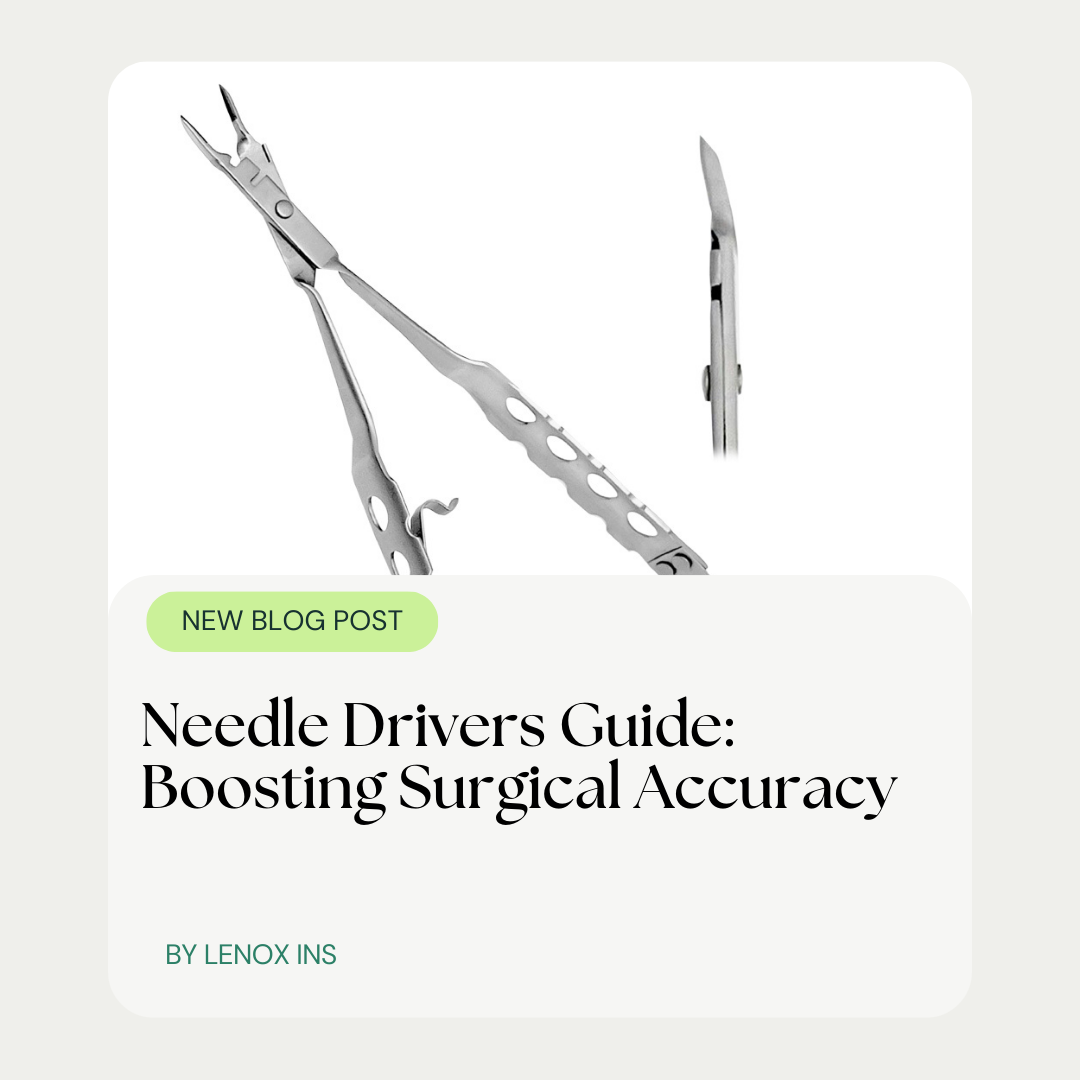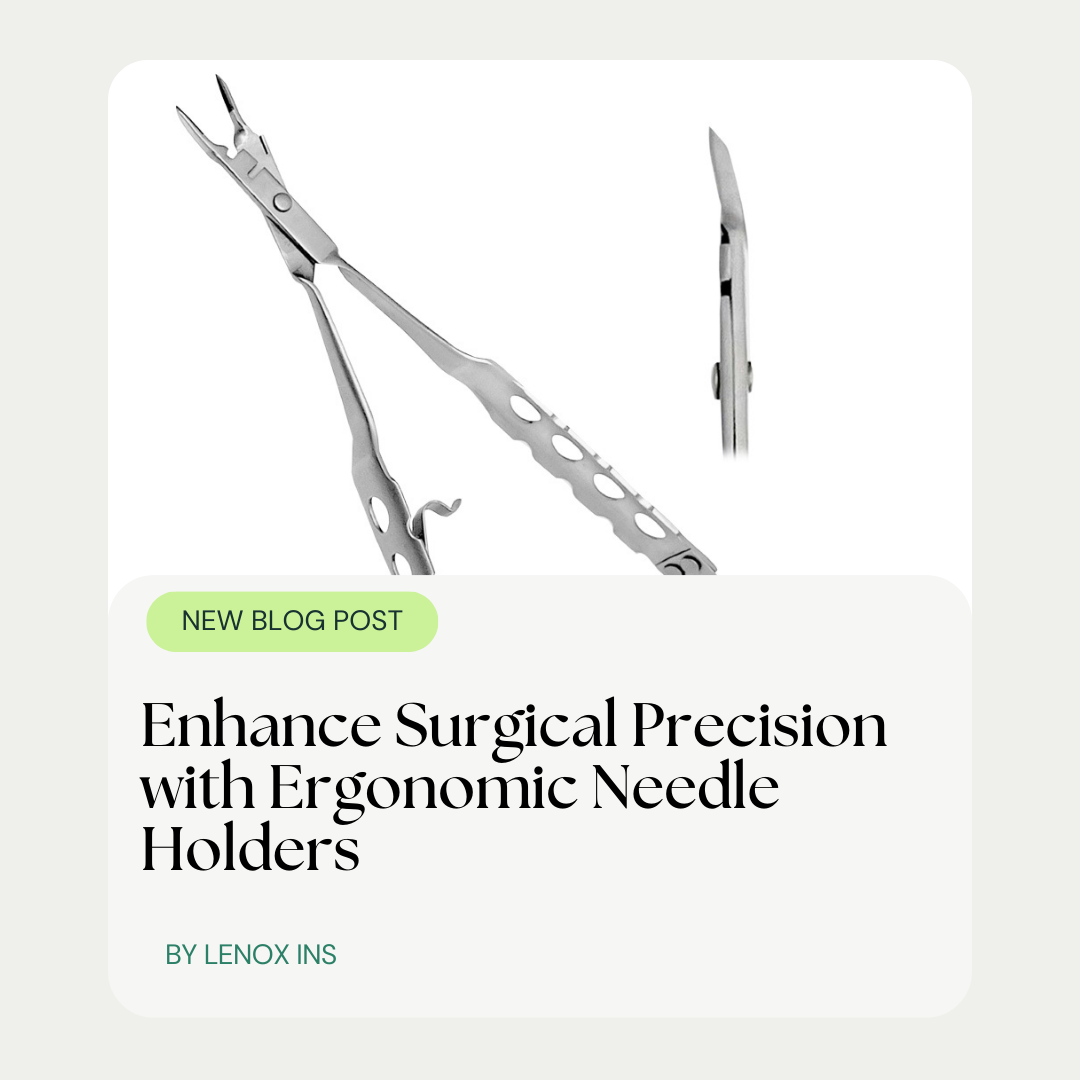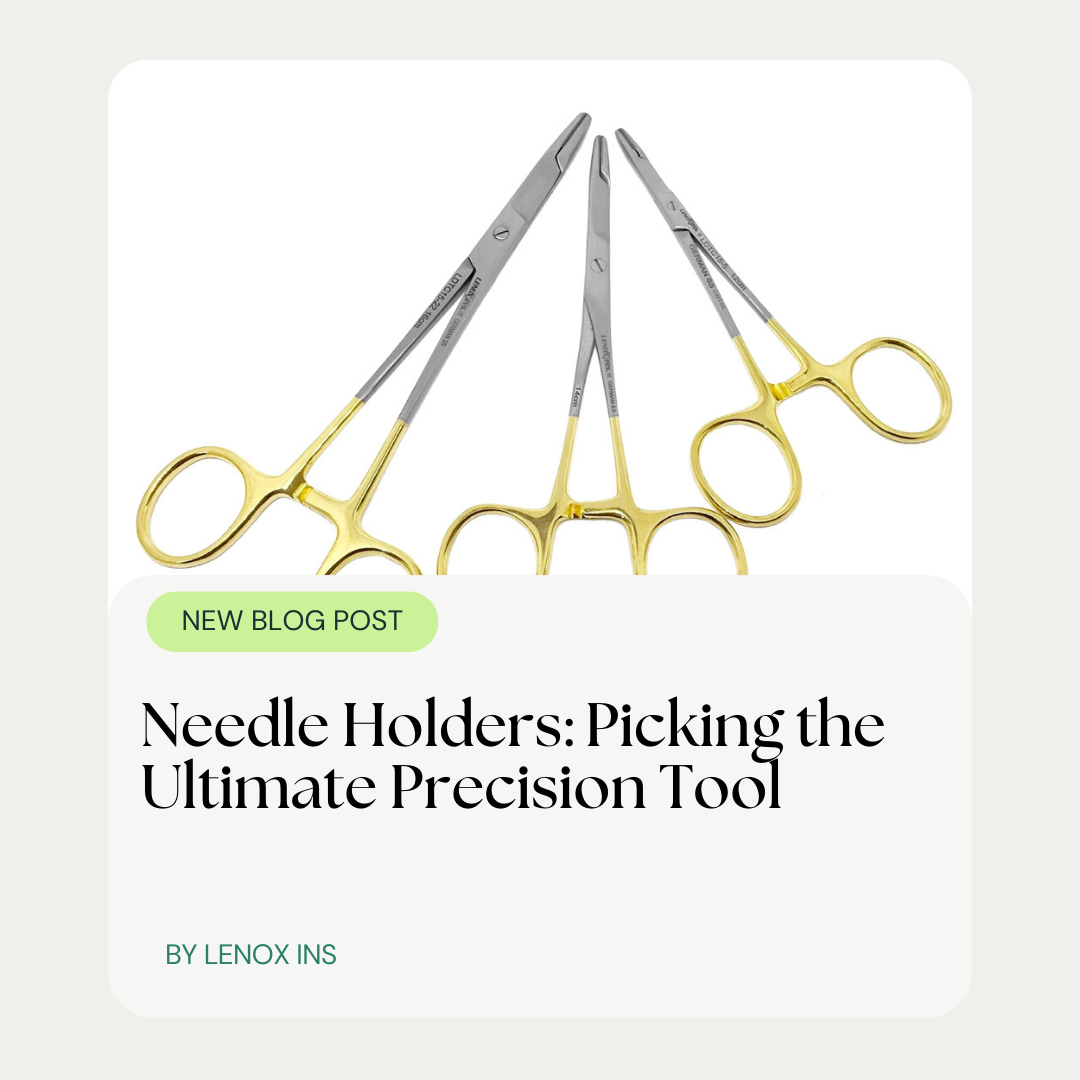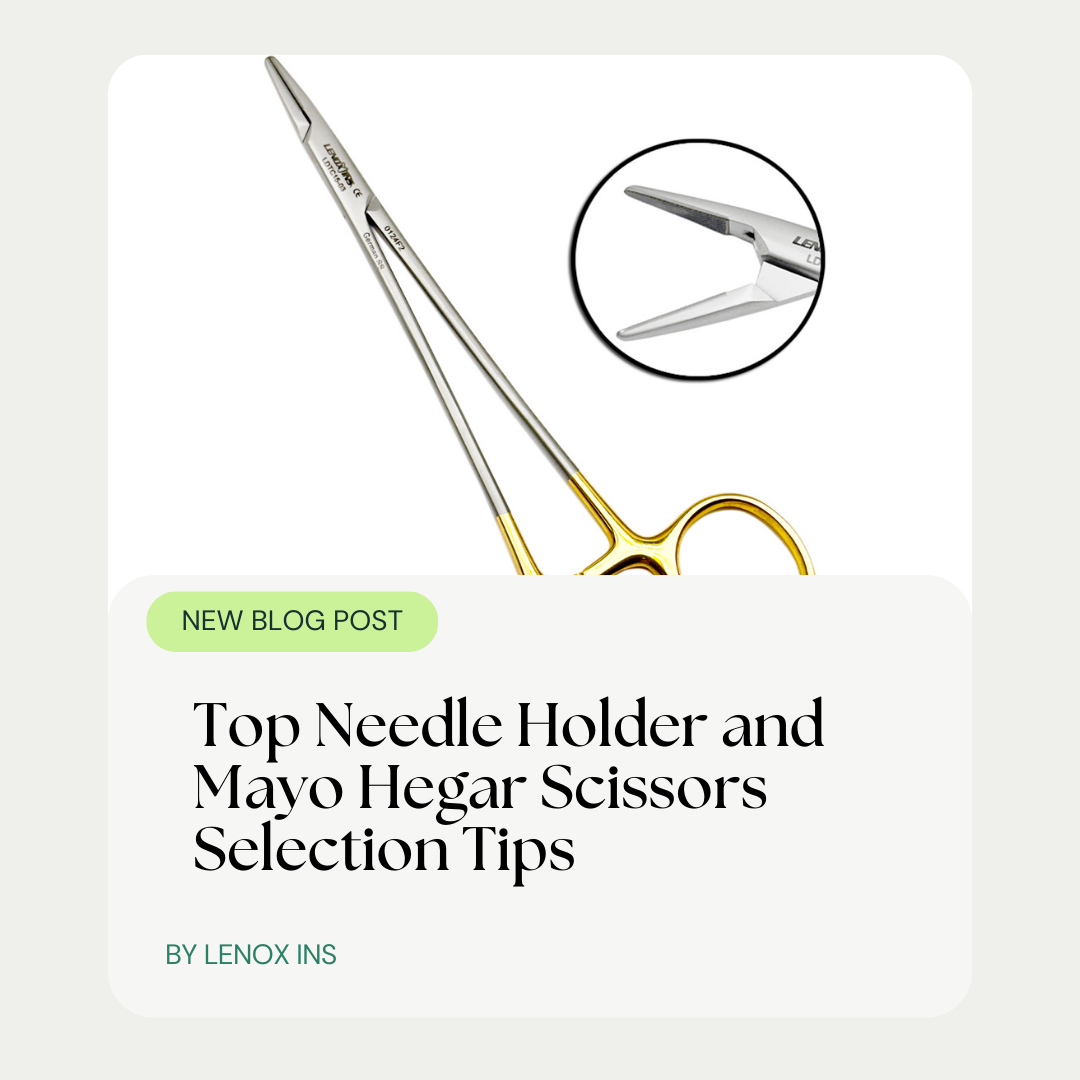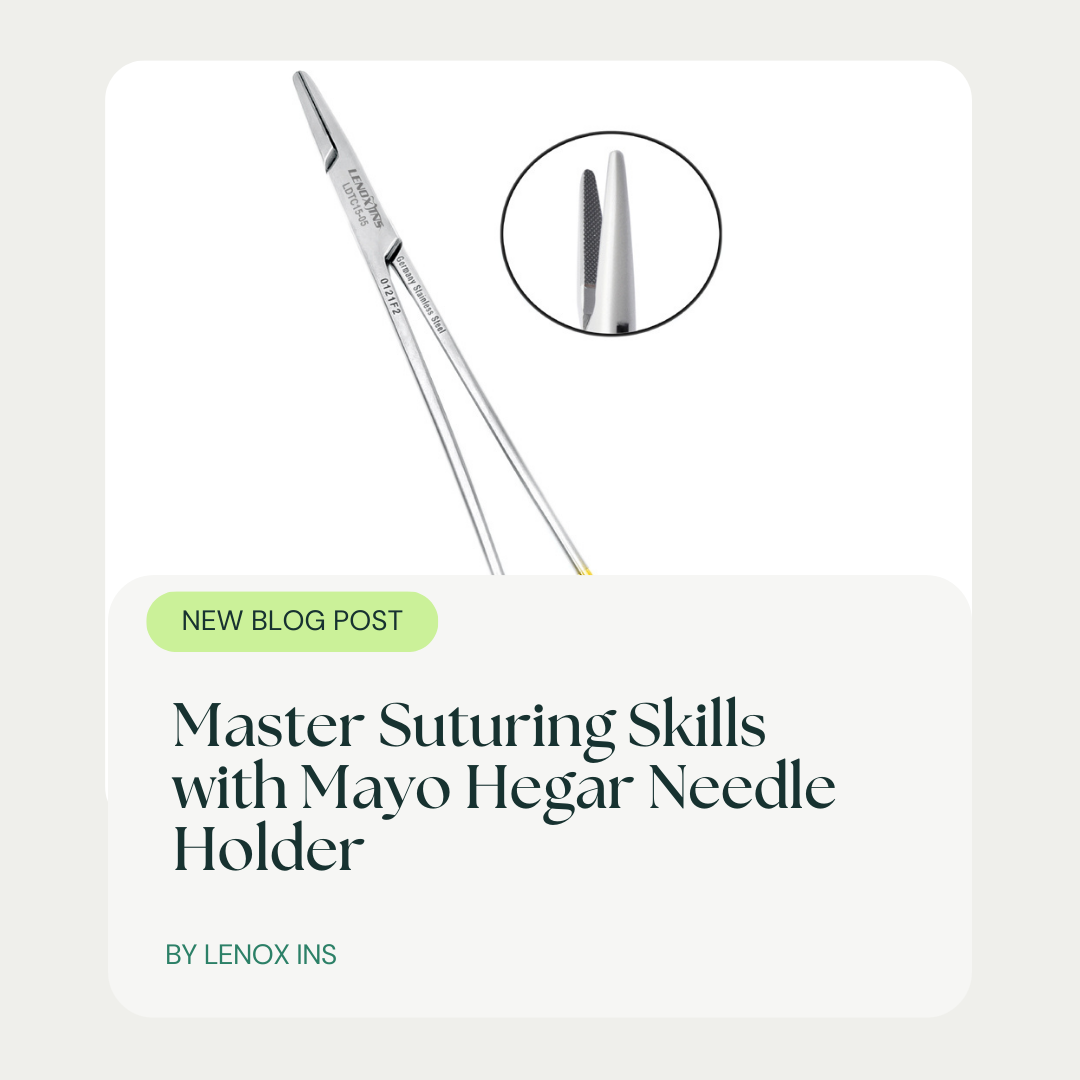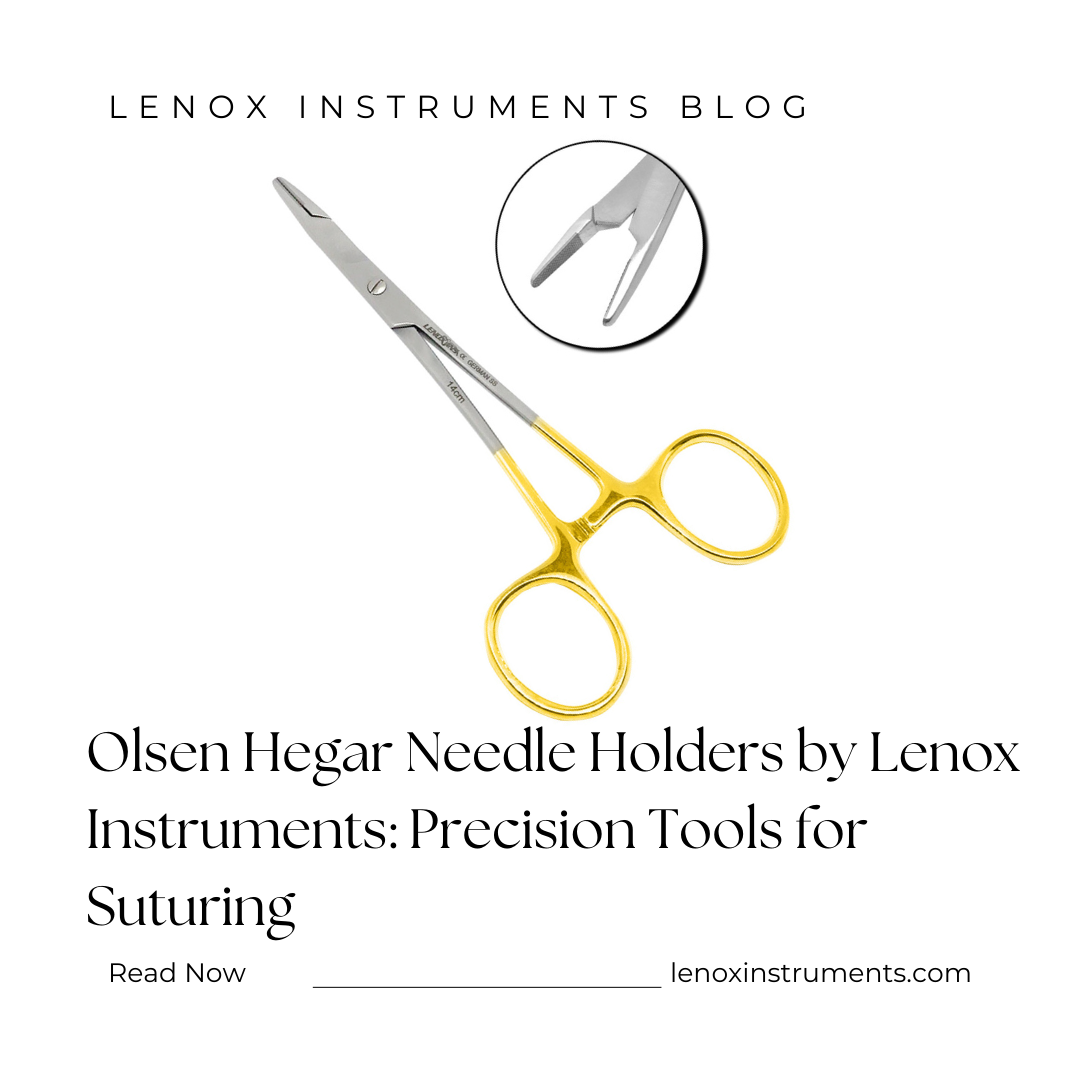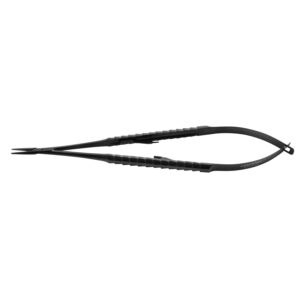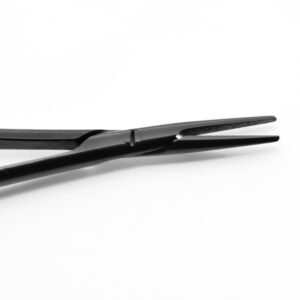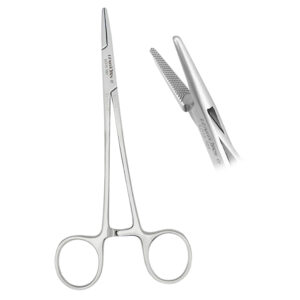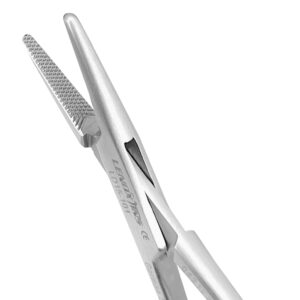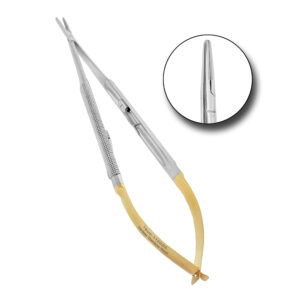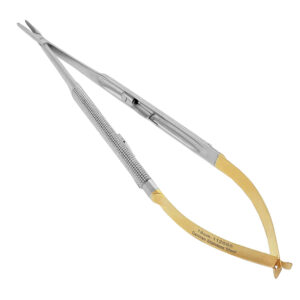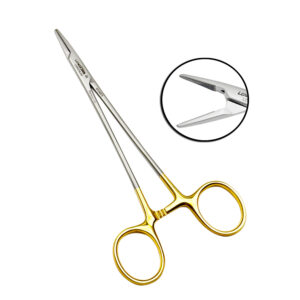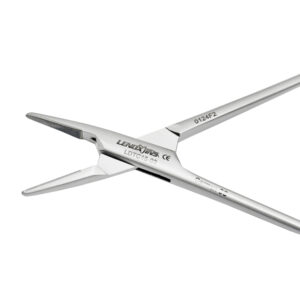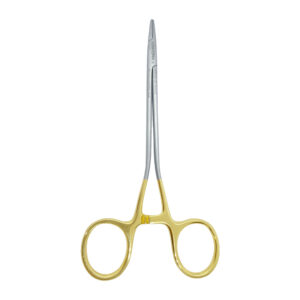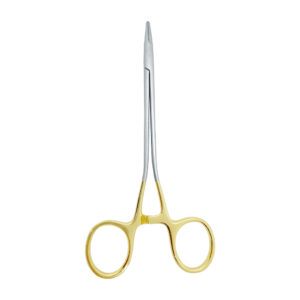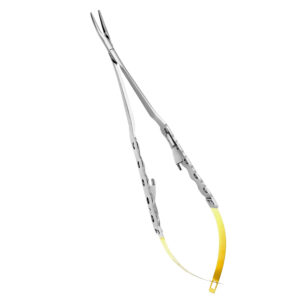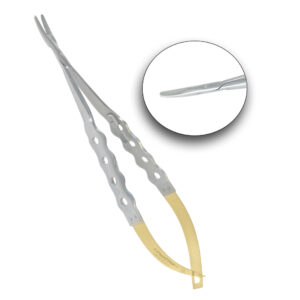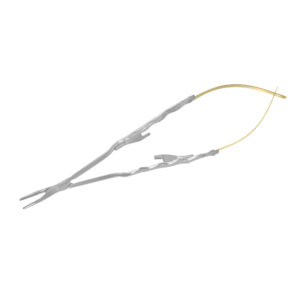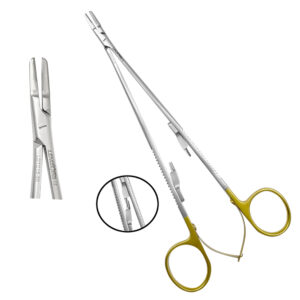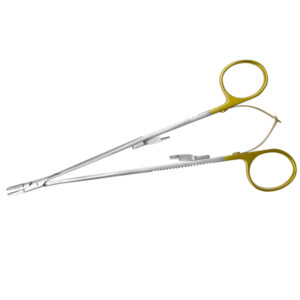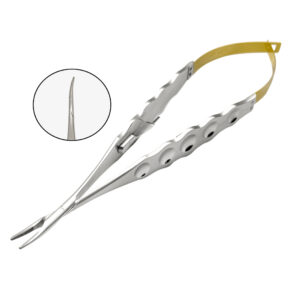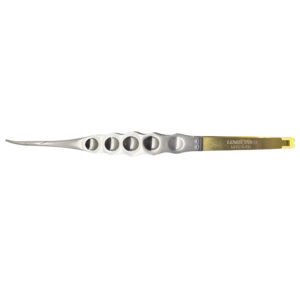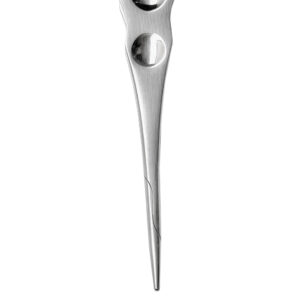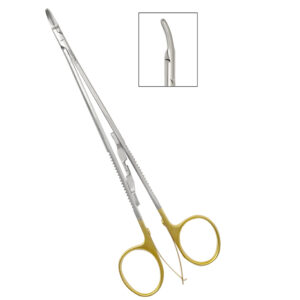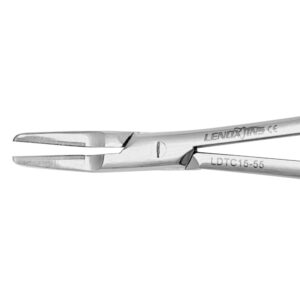Needle Drivers Guide: Boosting Surgical Accuracy
- Posted November 12, 2024
- by lenoxinstro
Choosing the right needle drivers is essential for achieving enhanced surgical accuracy. Many surgeons face frustration when their tools do not provide the control needed for delicate procedures, especially when handling ligatures and sutures. This article will cover key factors to consider when selecting needle drivers, explore different types, and discuss ergonomic designs that prioritize surgeon comfort. By understanding these elements, readers can improve their surgical outcomes, ensuring safer procedures and better patient care. This content will address the common challenge of selecting appropriate tools to minimize complications during surgeries involving wounds and sutures.
Key Takeaways
- Needle drivers are crucial for achieving precise suturing in surgical procedures
- Selecting the right needle driver enhances surgical outcomes and minimizes tissue trauma
- Ergonomic design in needle drivers reduces hand fatigue and improves control during operations
- Regular maintenance ensures optimal performance and prolongs the lifespan of needle drivers
- Specialty and atraumatic needle drivers significantly enhance accuracy for delicate surgical tasks
Understanding the Importance of Needle Drivers in Surgery

Needle drivers play a critical role in precision suturing during surgery, directly influencing surgical outcomes. Their design and angle impact how effectively a surgeon can manipulate the needle holder, reducing the risk of injury and ensuring accurate suture placement. Additionally, this section will address common challenges faced with needle drivers, including issues with gloves and solutions to enhance surgical efficiency.
The Role of Needle Drivers in Precision Suturing
Needle drivers are essential tools for surgeons, as they facilitate precise suturing, which is vital for optimal surgical outcomes. Designed with a ratchet mechanism and constructed from stainless steel, these instruments provide the necessary grip and control, allowing surgeons to maneuver needles with their fingers accurately. This precision not only minimizes the risk of tissue damage but also enhances the effectiveness of hemostatic techniques during surgery, addressing common challenges in suture placement.
How Needle Drivers Influence Surgical Outcomes
The selection of the right needle drivers significantly influences surgical outcomes, particularly in urology where precision is paramount. Effective needle drivers enable surgeons to secure tissue adequately while minimizing trauma, which is essential for patient recovery. Additionally, proper sterilization and the use of personal protective equipment during procedures can enhance safety and efficacy, establishing a standard that helps to maintain optimal surgical environments:
- Precision in suturing to secure tissue integrity.
- Reduction of trauma to surrounding tissues.
- Importance of sterilization and protective equipment.
- Enhancing surgeons’ hand control during complex procedures.
Common Challenges and Solutions With Needle Drivers
Surgeons often encounter common challenges when using needle drivers, especially in intricate procedures such as laparoscopy. Issues such as limited visibility and hand fatigue can affect precision, leading to difficulties in securing knots effectively. To address these concerns, opting for needle drivers made from tungsten or titanium can enhance durability and grip, providing surgeons with the reliability needed for accurate suture placement and minimizing the risks associated with common surgical complications. One recommended product for this purpose is the Castroviejo needle holders 18cm TC curved.
Choosing the right needle driver can change the course of a procedure. Next, a look at the key factors that guide this important choice awaits.
Key Factors to Consider When Selecting Needle Drivers

Choosing the right needle drivers involves several critical factors that enhance surgical accuracy. It is important to match the needle driver size to the surgical needles used, ensuring compatibility for efficient suturing. Evaluating handle designs is vital for optimal control, while assessing jaw patterns helps determine their applications across various procedures. Additionally, the significance of locking mechanisms cannot be overlooked, as they provide stability and security during operations. Mayo Hegar needle holders
Matching Needle Driver Size to Surgical Needles
Matching the size of needle drivers, such as the steel Webster needle holder, with the surgical needles used is essential for achieving optimal precision in various procedures, including plastic surgery. A properly sized needle driver enhances grip and control, allowing surgeons to manipulate the jaws effectively, which is critical for securing sutures without damaging surrounding tissues. For example, using pliers that are too large can lead to difficulty in navigating intricate areas, highlighting the importance of selecting the correct needle driver size for improved surgical outcomes.
Evaluating Handle Designs for Optimal Control
When selecting needle drivers, evaluating handle designs is essential for achieving optimal control during surgical procedures. Handles should be ergonomically designed to fit comfortably in the surgeon‘s hand, providing stability and reducing fatigue during extended use. For instance, a ribbed or textured handle can significantly improve grip, ensuring that the needle driver remains secure even in delicate operations where precision is crucial: needle holder
- Comfort and ergonomics reduce hand fatigue.
- Textured or ribbed handles enhance grip security.
- Proper handle size supports better maneuverability.
- Design affects the surgeon‘s ability to execute complex suturing techniques.
Assessing Jaw Patterns and Their Applications
Assessing jaw patterns on needle drivers is crucial for achieving optimal surgical accuracy and adaptability during procedures. Different jaw shapes and configurations are designed for specific tasks; for example, tapered jaws offer enhanced precision for delicate suture placements, while broader jaws provide a firmer grip on larger needles. By understanding the applications of various jaw designs, surgeons can select needle drivers that ensure better tissue handling and improved outcomes across a range of surgical scenarios.
The Significance of Locking Mechanisms
The locking mechanisms of needle drivers are essential for ensuring stability and security during surgical procedures. These mechanisms allow surgeons to maintain a consistent grip on the needle, which is crucial for precise suturing. For example, a needle driver with a reliable locking feature minimizes the risk of accidental release, enhancing control during intricate maneuvers and ultimately contributing to better surgical outcomes: Castro Viejo Needle Holder
| Feature | Benefits |
|---|---|
| Reliable Locking Mechanism | Ensures stability, reduces accidental needle release |
| Compatibility with Various Needle Sizes | Supports a broad range of surgical applications |
| Durability | Enhances long-term performance and reliability during procedures |
| Ease of Use | Facilitates smooth transitions between sutures |
Understanding the key factors lays the groundwork for making an informed choice. Now, it is time to look at the various types of needle drivers available and see how each one can meet specific needs.
Exploring Different Types of Needle Drivers

This section examines various types of needle drivers essential for surgical precision. The comparison between standard and micro needle drivers highlights their roles in different surgical contexts. Additionally, specialty needle drivers designed for specific procedures and the advantages of tungsten carbide needle drivers are discussed. Finally, the use of atraumatic needle drivers for delicate surgeries is presented, emphasizing their significance in minimizing tissue trauma.
Comparison of Standard and Micro Needle Drivers
The comparison between standard and micro needle drivers highlights key differences that can significantly impact surgical accuracy. Standard needle drivers are typically used for larger sutures and tissue layers, providing a robust grip for general procedures. In contrast, micro needle drivers are designed for intricacies involved in delicate surgeries, allowing surgeons to handle finer sutures with precision, which is crucial in minimizing trauma to surrounding tissues. Understanding these distinctions enables surgeons to select the most appropriate needle drivers based on the specific requirements of each operative scenario.
Specialty Needle Drivers for Specific Procedures
Specialty needle drivers are tailored for specific surgical procedures, enhancing performance in various medical scenarios. For instance, drivers designed for ophthalmic surgeries feature finer jaws that allow for precision in delicate eye tissue manipulation, while those intended for vascular procedures offer compatibility with larger sutures and ease of handling. Selecting the right specialty needle driver can greatly improve accurate suture placement and minimize the risk of complications: Olsen Hegar Needle Holder
- Ophthalmic needle drivers for delicate eye surgeries.
- Vascular needle drivers for larger sutures and improved handling.
- Pediatric needle drivers designed for precision in smaller anatomical areas.
Benefits of Tungsten Carbide Needle Drivers
Tungsten carbide needle drivers are highly valued for their durability and performance in surgical settings. Their superior hardness makes them resistant to wear, allowing for prolonged use without loss of precision, which directly contributes to enhanced surgical accuracy. Additionally, the exceptional grip provided by tungsten carbide jaws enables surgeons to secure sutures firmly, reducing the risk of needle slippage during delicate procedures and ultimately improving patient outcomes.
Using Atraumatic Needle Drivers for Delicate Surgeries
Atraumatic needle drivers are specifically designed for delicate surgeries where minimizing tissue trauma is crucial. These specialized instruments feature a unique jaw design that allows for a gentle grasp on the suture without applying excessive pressure, thus protecting surrounding tissue. Utilizing atraumatic needle drivers can significantly enhance surgical accuracy and outcomes, particularly in procedures involving sensitive areas, as they provide both control and security during suture placement.
The choice of needle drivers shapes the surgeon‘s grip and precision. Next, the reader will discover how the materials and construction affect performance and durability, key factors in every surgical procedure. Castroviejo needle holder
Materials and Construction of Needle Drivers

Material choices in the construction of needle drivers, particularly stainless steel versus titanium, significantly influence surgical accuracy and performance. The impact of jaw insert materials on gripping abilities, along with considerations for corrosion resistance and longevity, are essential in selecting effective instruments. Additionally, understanding sterilization requirements plays a crucial role in ensuring the safety and reliability of needle drivers in various surgical settings.
Understanding Material Choices: Stainless Steel vs. Titanium
When selecting needle drivers for enhanced surgical accuracy, understanding material choices is crucial. Stainless steel offers excellent strength and corrosion resistance, making it a popular choice for many surgical instruments. In contrast, titanium is lighter and provides superior durability, making it ideal for high-performance settings where precision is paramount. By choosing the right material, surgeons can enhance instrument longevity while ensuring optimal surgical outcomes.
The Impact of Jaw Insert Materials on Performance
The choice of jaw insert materials in needle drivers significantly affects performance during surgical procedures. High-quality materials like tungsten carbide provide superior grip and durability, which are essential for maintaining precision when suturing tissues. Conversely, lower-grade materials may compromise control and increase the likelihood of needle slippage, potentially leading to complications during delicate surgeries.
Corrosion Resistance and Longevity Factors
Corrosion resistance and longevity are critical factors to consider when selecting needle drivers, as they directly influence their performance during surgical procedures. High-quality materials, such as stainless steel and titanium, offer superior resistance to corrosion, ensuring that the instruments maintain their integrity and reliability over time. For instance, needle drivers constructed with these materials remain effective and safe even through repeated sterilization processes, which is essential for preserving surgical accuracy and minimizing the risk of instrument failure during complex surgeries.
Selecting Needle Drivers Based on Sterilization Requirements
Selecting needle drivers based on sterilization requirements is essential for maintaining surgical standards. Proper sterilization protocols ensure that instruments remain safe and effective for use during procedures, thereby preserving patient safety. Surgeons should choose needle drivers that can withstand repeated sterilization processes, such as those made from stainless steel or titanium, since these materials are resistant to corrosion and ensure long-term durability while maintaining sharpness and functionality.
With the right tools in hand, a surgeon‘s focus sharpens. Next, the design of these tools becomes equally vital, influencing comfort and precision in the operating room.
Ergonomic Design and Surgeon Comfort

The ergonomic design of needle drivers significantly contributes to surgeon comfort and operational precision. Features that reduce hand fatigue are crucial for maintaining focus during lengthy procedures. Balanced weight distribution enhances control, while customizable options cater to individual preferences, ensuring optimal handling. These factors collectively enhance precision through ergonomics, making them vital considerations in selecting needle drivers.
Features That Reduce Hand Fatigue
Key features that reduce hand fatigue in needle drivers include ergonomic handle designs and proper weight distribution. Ergonomically shaped handles that fit comfortably in the surgeon‘s hand allow for prolonged use without discomfort, enabling better focus and control during intricate procedures. Furthermore, lightweight materials enhance maneuverability, allowing surgeons to maintain precision throughout long operations without experiencing excessive strain.
The Importance of Balanced Weight Distribution
Balanced weight distribution in needle drivers is essential for maintaining precision and minimizing hand fatigue during surgical procedures. When the weight is evenly distributed, surgeons can leverage their natural hand movements, resulting in greater control and stability while suturing. For instance, needle drivers designed with optimal weight balance allow for extended usage without discomfort, ultimately enhancing both surgeon performance and patient outcomes. Visit Lenox needle holder for more information.
Customizable Options for Individual Preferences
Customizable options for needle drivers cater to individual preferences, ensuring that surgeons can find instruments that align with their unique skills and comfort levels. Features such as adjustable handle sizes and interchangeable grips allow for enhanced control and reduced fatigue, which is particularly beneficial during extensive surgical procedures. By selecting needle drivers that can be tailored to their specific needs, surgeons can improve their overall performance and maintain precision throughout operations, ultimately contributing to better patient outcomes.
Enhancing Precision Through Ergonomics
Ergonomic design in needle drivers significantly enhances surgical precision by minimizing hand fatigue and improving control during procedures. Features such as contoured handles enable surgeons to maintain a firm grip without straining, which is particularly beneficial during long operations. By prioritizing comfort and practicality, these instrument designs help surgeons perform delicate suturing tasks more effectively, ultimately contributing to better patient outcomes.
Surgeon comfort enhances precision, but tools require care to function well. Proper maintenance of needle drivers not only ensures their longevity but also supports the fine work ahead.
Maintenance Practices for Optimal Needle Driver Performance

Proper maintenance of needle drivers is essential for ensuring optimal surgical accuracy and performance. This section will cover critical practices such as effective cleaning and sterilization methods, regular inspections for wear and functionality, guidelines for sharpening and repairs, and key signs indicating when replacements are necessary. Each aspect contributes significantly to the longevity and reliability of needle drivers in surgical settings.
Proper Cleaning and Sterilization Methods
Proper cleaning and sterilization methods are crucial for maintaining the performance of needle drivers, ensuring they remain safe and effective for surgical use. Regular cleaning with appropriate detergents immediately after procedures helps prevent contamination, while sterilization techniques, such as autoclaving, guarantee that the instruments meet surgical standards. Following these practices supports prolonged instrument life and enhances surgical accuracy, addressing common concerns related to instrument integrity:
| Cleaning Method | Description | Benefits |
|---|---|---|
| Manual Cleaning | Thorough washing with suitable detergents followed by rinsing and drying | Prevents buildup of debris, ensuring instrument functionality |
| Ultrasonic Cleaning | Using ultrasonic waves to remove debris, followed by rinsing | Provides deep cleaning, especially in hard-to-reach areas |
| Sterilization (Autoclaving) | Subjecting instruments to high-pressure steam to eliminate all microorganisms | Ensures instruments maintain sterility before subsequent use |
Regular Inspection for Wear and Functionality
Regular inspection of needle drivers for wear and functionality is fundamental to preserving surgical accuracy and safety. Surgeons should perform routine checks to identify any signs of damage, such as chipped jaws or loose joints, which can compromise precision during procedures. Proactively addressing these issues can prevent potential surgical complications and maintain the integrity of surgical operations:
- Conduct regular visual inspections for signs of wear.
- Check for smooth movement of locking mechanisms.
- Assess gripping surfaces for loss of friction.
- Replace instruments that show significant deterioration.
Sharpening and Repair Guidelines
Sharpening and repair practices play a crucial role in maintaining the performance of needle drivers, which are vital for enhanced surgical accuracy. Regularly assessing the sharpness of the jaws ensures that surgeons can effectively grasp the needle without slippage, while timely repairs address any mechanical issues that may impede functionality. By investing in proper sharpening techniques and repair services, surgical teams can prolong the lifespan of their needle drivers, ultimately contributing to patient safety and procedure efficiency.
Signs Indicating the Need for Replacement
Signs indicating the need for replacement of needle drivers include visible wear on the gripping surfaces, such as scratches or chips, which can hinder their performance during surgical procedures. Additionally, if the locking mechanism shows signs of malfunction or fails to hold the needle securely, it compromises accuracy and increases the risk of complications. Regular assessments of these features help ensure that surgeons maintain optimal instrument performance, directly influencing surgical outcomes and patient safety.
Conclusion
Selecting the optimal needle drivers is crucial for enhancing surgical accuracy and improving patient outcomes. Surgeons must consider factors such as size compatibility, handle design, and jaw patterns to ensure precision and control during procedures. Investing in high-quality materials and ergonomic designs will significantly reduce hand fatigue and increase effectiveness in complex surgeries. Ultimately, the right needle drivers not only promote safer surgical practices but also facilitate better healing and recovery for patients.

